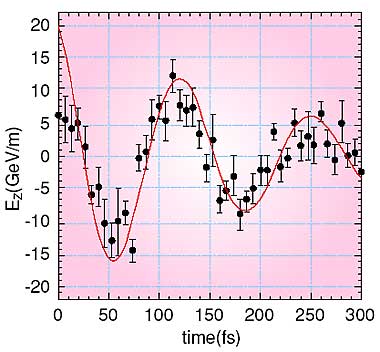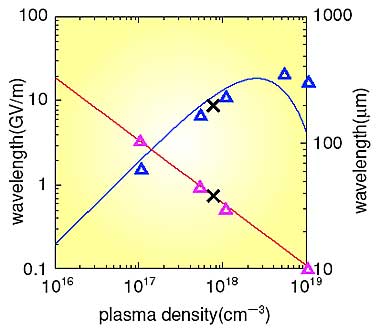Iterative intense laser pulses in plasma excite a large amplitude plasma wave that is associated with large electric fields called "laser wakefields" and which generates high-energy particles. Recently, laser-driven plasma accelerators using laser wakefields have been conceived as being the next-generation particle accelerators. Such accelerators promise ultrahigh field particle acceleration and compact size compared with conventional accelerators. The gas jet has been used for many applications to supply a plasma source in a vacuum chamber. Since a gas adiabatically expands through a nozzle at the speed of sound, the density distribution changes in space and time at the same rate as the sound velocity of the gas. Therefore, it is necessary to measure the time-dependent spatial distribution of the gas density to control the plasma precisely. For this purpose, we have made a time-resolved measurement of the gas density distribution produced by the gas jet and have investigated the laser wakefield to determine the feasibility of a laser wakefield accelerator.
We have developed such a gas jet. We find the optimum laser focus position is 1.5 mm from the gas jet, and the neutral gas density of He gas is 3.7x1017 cm-3 (plasma density of 7x1017 cm-3) at the pump laser focus with a back pressure of 10 atm. The amplitude of the longitudinal wakefield for a back pressure of 10 atm of helium at a position 1.5 mm from the end of the gas-jet is obtained from the plasma electron density oscillation observed by using frequency domain interferometry (FDI). A schematic of FDI is shown in Fig. 8-5. Fig. 8-6 shows the wakefield measured by FDI. This plasma wave period corresponds to the electron density of 7x1017 cm-3 in the linear wakefield theory, which is in good agreement with the electron density for the totally ionized helium gas expected from the neutral gas density measurements. A maximum longitudinal wakefield of 20 GV/m is inferred. Fig. 8-7 shows the results of the experiment, the simulation, and the linear wakefield theory. These are in agreement.
We made the first direct observation of coherent ultrahigh gradient wakefields excited by an intense ultra-short laser pulse in a gas-jet plasma and predict the possibility of generating an intense bright electron source by an intense laser pulse. |



